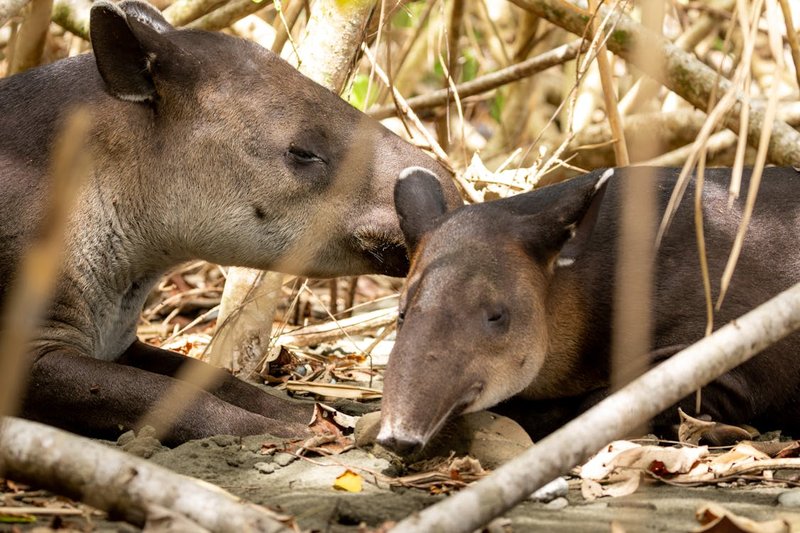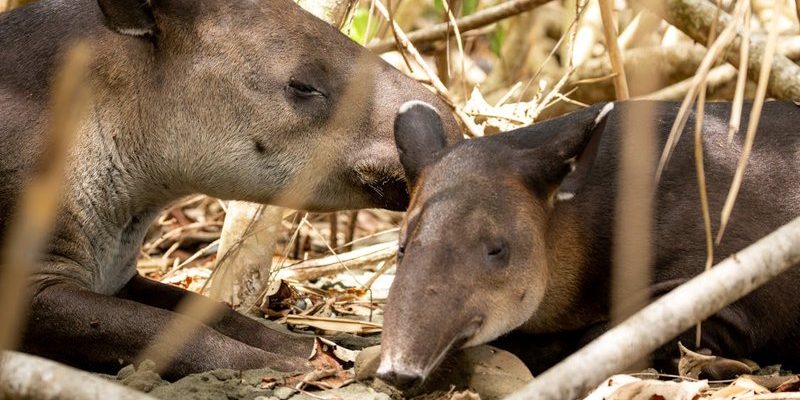
Mountain tapirs are shrouded in mystery, partly due to their remote habitats and shy nature. They’re about the size of a large dog, with a stout body covered in shaggy, dark fur. Picture a cross between a pig and a rhinoceros—the tapir’s short, prehensile snout allows it to forage on leaves and fruits. So, how do these gentle giants ensure that their young grow up strong and healthy in such challenging environments? Let’s dive into the world of mountain tapirs and explore the beautiful journey of their parenting.
Understanding Mountain Tapir Behavior
Mountain tapirs are solitary creatures, coming together primarily for mating. After a gestation period of about 13 months, a mother tapir usually gives birth to a single calf. This slow reproduction rate might seem daunting, especially in a world where habitats are shrinking, but this careful approach to raising their young serves a crucial purpose.
Once born, the calf is not instantly ready to face the wild. Like a tiny sponge, it soaks up everything it can from its mother. The mother tapir remains cautious and protective, often hiding her calf in dense vegetation while she forages for food. This tactic helps keep the calf safe from potential predators, like pumas and jaguars. In a way, it’s like how a parent might keep their child close in a crowded park—always aware of surroundings, ready to protect.
The Role of the Mother Tapir
The mother mountain tapir plays an essential role in the early life of her calf. For the first few weeks after birth, the mother is extremely attentive. She nurses her calf frequently, ensuring it gets the nutrients it needs to thrive. You might imagine this as being like a cozy café where the calf stops by for regular meals.
During this critical time, the mother also teaches her young one important survival skills. She takes the calf on short foraging trips, showing it how to find food like leaves, fruits, and grasses. Each outing is a mini adventure, giving the calf the chance to learn about its surroundings while building strength and confidence. Here’s the thing—these early experiences are essential for helping the calf develop instincts that will serve it throughout its life.
Social Dynamics and Interaction
As the calf grows, its relationship with its mother evolves. Between the ages of three to six months, the calf starts to explore further from its mother but still relies on her for guidance and protection. This is a significant transitional phase, almost like a teenager starting to gain independence. The mother tapir encourages this independence but remains close by, watching over her young one.
Interestingly, mountain tapirs communicate through various sounds and body language. You might hear a soft whistle or grunt when they communicate. These subtle cues are their way of expressing comfort or alerting one another to potential dangers. Just picture how a parent might call their child in for dinner or warn them of a passing car—every sound has value.
Challenges in the Wild
Raising young in the wild isn’t without its challenges. Mountain tapirs face threats from habitat loss due to deforestation and agricultural expansion. As their territories shrink, mothers need to work harder to protect their calves. Imagine trying to raise a child in a neighborhood that’s constantly changing—it’s stressful and requires constant vigilance.
Additionally, predators are always a concern. Young tapirs are particularly vulnerable, and their mothers must be on high alert. This is where the mother’s protective instincts shine. They teach their young not only how to find food but also how to stay safe. The bond between mother and calf grows stronger through these shared experiences, as they navigate the dangers of their environment together.
Weaning and Growing Up
Around six months old, the tapir calf begins the weaning process. This can be a bittersweet time for both mother and child. The calf starts to graze on solid food, but it still seeks comfort from its mother. It’s like a teenager trying to assert independence while still wanting their parents’ support. The mother tapir gradually reduces nursing, encouraging her calf to explore more.
After weaning, the young tapir remains with its mother for up to a year. During this time, it learns crucial social behaviors and survival skills. For instance, it observes how its mother interacts with the environment and other animals, slowly building its own confidence and knowledge. Just think of this as a young adult preparing to leave home for the first time, equipped with the skills needed to thrive independently.
The Importance of Conservation
Given the increasing threats mountain tapirs face, conservation efforts are more critical than ever. Protecting their habitats ensures that these unique animals can continue to raise their young in the wild. Habitat preservation also supports the diverse ecosystems that depend on healthy tapir populations.
Endangered species like the mountain tapir remind us of the need for balanced stewardship of our planet. By contributing to conservation initiatives, we can help secure a future where mountain tapirs can thrive and raise their young in the wild.
With continued awareness and efforts, we can support these remarkable creatures. If you’re interested, think about ways you can get involved, whether through donations, education, or simply spreading the word about the importance of wildlife conservation.
Understanding how mountain tapirs raise their young gives us a glimpse into the delicate balance of nature. These gentle creatures, with their nurturing mothers and cautious lifestyles, demonstrate the beauty of parenting in the wild. As they forge their path through dense forests, each calf learns vital skills that will help them survive. We can all play a part in ensuring that these fascinating animals have a future, allowing them to continue their important role in the ecosystem. After all, raising young is tough work, whether you’re a tapir or a parent in the human world.

